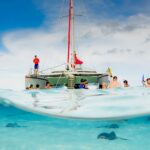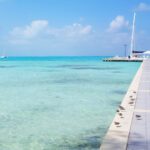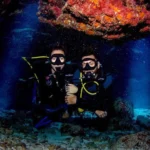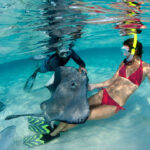There are many, many incredible places to snorkel in Grand Cayman, and for most, all you need to do is swim a short way off the beach. You can rent snorkeling equipment from Cayman’s Red Sail Sports at many locations across the island.
Since sealife numbers and diversity fluctuate with the weather and seasons, it is worth chatting to a local expert once you arrive for the best spots for the timing of your trip. Still, there are a lot of relatively safe options, and we have listed our favorites below.
Some tour companies combine snorkeling opportunities with other activities. A popular combination is Starfish Point, the Stingray City Sandbar, and a local offshore reef. These three are included in Red Sail Sports’ Grand Cayman North Sound Eco Safari.
To discuss anything about snorkeling in Grand Cayman, whether it is timings, locations, or the best spots for different species, please do get in touch with us at Rum Point Club.
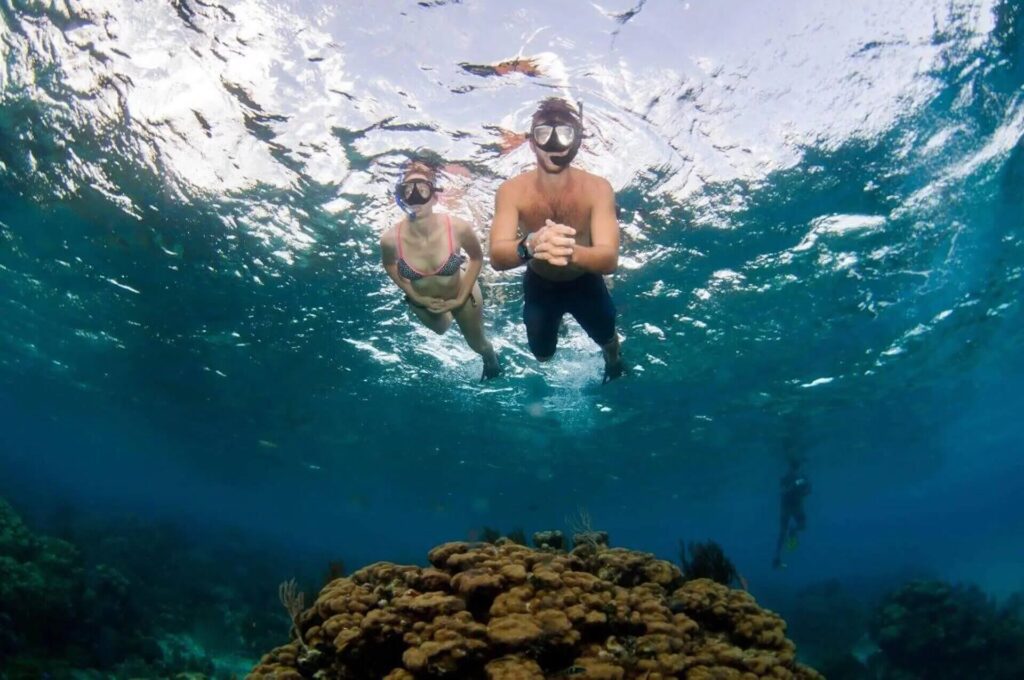
1. Stingray City Sandbar
This top Grand Cayman attraction is only accessible by boat. The Sandbar is just 3ft to 4ft deep and you can both snorkel and paddle with the gentle rays. To get to Stingray City from Rum Point, join a Red Sail Sports catamaran to get across the North Sound.
Our favorite time to see the stingrays, however, is during the quieter breakfast or evening times; join our sister company, Red Sail Sports’ Grand Cayman sunset Stingray Excursion, or for early birds, Grand Cayman’s breakfast with stingrays tour.

2. The USS Kittiwake wreck
This is a 251-foot former submarine rescue vessel with a depth range of 15 feet to 65 feet. The West End of Grand Cayman has particularly incredible visibility, sometimes more than 100 feet, so snorkeling near the surface gives you great views of the wreck.
Visiting the wreck requires a licensed operator; check out Red Sail Sports’ Kittiwake Snorkelling tour for an insider expert view of the wreck.
Another fascinating wreck snorkeling spot is the Wreck of The Cali, accessible from shore from George Town.
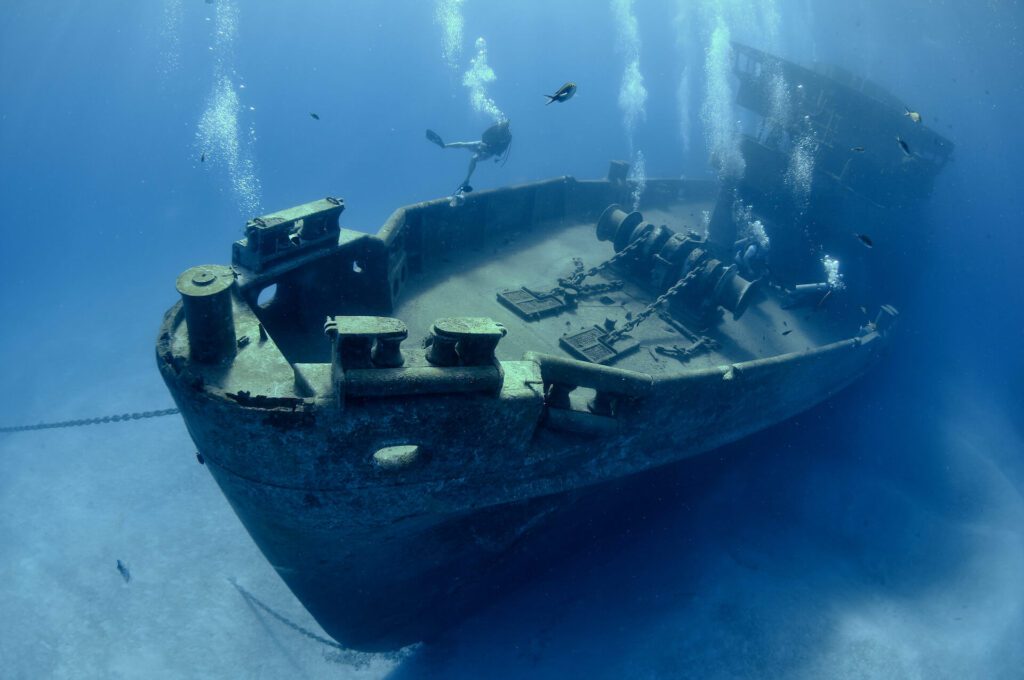
3. Rum Point
There are several snorkeling spots around Rum Point. Many fish gather just to the right of Rum Point’s dock, and this is an ideal spot for beginners to explore and find their snorkeling sea legs!
Apart from Rum Point Beach itself, the neighboring beach of Grand Cayman Kai is a great place to start. The current will likely gently push you towards Rum Point itself, taking in lots of fish and soft corals on the way. Beware of the boat channel and also have a dive flag with you for visibility.
Check out the many guided excursions from Rum Point offered by Red Sail Sports, and don’t forget to drop in for a special cocktail or a taste of truly local cuisine here at the Rum Point Club.

4. Boggy Sands Reef
You can find Boggy Sands Reef at the northern end of Seven Mile Beach. It’s in an area that’s relatively difficult to access and requires a long swim to reach the best spots. For these reasons, it’s not an easy snorkel for beginners.
However, when you join Red Sail Sports’ Grand Cayman Snorkeling and Jet Ski Tour, you simply hop aboard a powerful Waverunner and head straight there in the company of an expert guide. It’s as easy as it is thrilling! When you vacate your jet ski and get into the beautiful azure water, you will be treated to an impressive collection of coral and a diverse range of colorful marine life.
The Seven Mile Beach Wakeboarding, Waterskiing, or Snorkeling speedboat rental can also visit Boggy Sands Reef as part of your experience.
5. Cemetery Beach
Swim for just 5 to 10 minutes from Seven Mile Beach to find this spot. You can see both coral and tropical fish including Snappers, Sergeant Majors, Jacks, and moray eels.
Jacks can be identified by their powerful sets of jaws, while you need to be an expert to distinguish between Snapper fish, which range in both size (3 inches to 3 feet) and color (red, pink, yellow, silver, and blue).

6. Eden Rock and Devil’s Grotto
This is an incredibly intricate snorkeling site featuring caves, overhangs, and tunnels. It is accessible from the shore; simply swim out to the mooring balls. In summer, tiny silverslides whizz through the tunnels and in and out of the caves.
Around this area, you can also spot a 6-foot-long tarpon and grouper. Tarpons can be distinguished by their jutting lower jaw and shiny silver scales. Grouper have some great camouflaging colors and are very important in maintaining the coral reef ecosystem.
7. Smith Cove
This is another chance to see intricate coral and rock formations which can be accessed on either side of the beach. Smith Cove is a safe and shallow option perfect for children and beginners. Look out for the Parrotfish fish grazing on the algae.

8. Sunset House
Sunset House is a resort on the southwest coast of the island. If you swim out from Sunset House, you may be able to see nurse sharks, together with the 9ft bronze Siren of Sunset House for some great underwater pictures. The shoreline also offers smaller sea pools for beginners.
9. Morritt’s Dock
Morritt’s Resort is located on the eastern side of the island, and there are several snorkeling locations nearby. Tortuga Diver’s Grand Cayman shallow reef snorkeling trip departs from Morritt’s beach to explore the best local sites.
If you are exploring this area on your own, head to Colliers Public Beach, or, if you are staying at the Tortuga Club, you can access the offshore artificial reef.
10. Cheeseburger Reef
Named after the Burger King situated right across the coastal road, this is one of the most popular reefs on the western shore. It is marked with yellow buoys to guide snorkelers along the best routes and protect the coral from damage.
Most coral is named after the shapes it forms. Perhaps you will be able to identify Brain coral, Elkhorn coral, Star coral, and Lettuce coral. Be careful around the yellowish-brown branches of Fire coral, however, as they can deliver a powerful sting. In fact, remember to avoid touching any coral; it can be incredibly delicate.
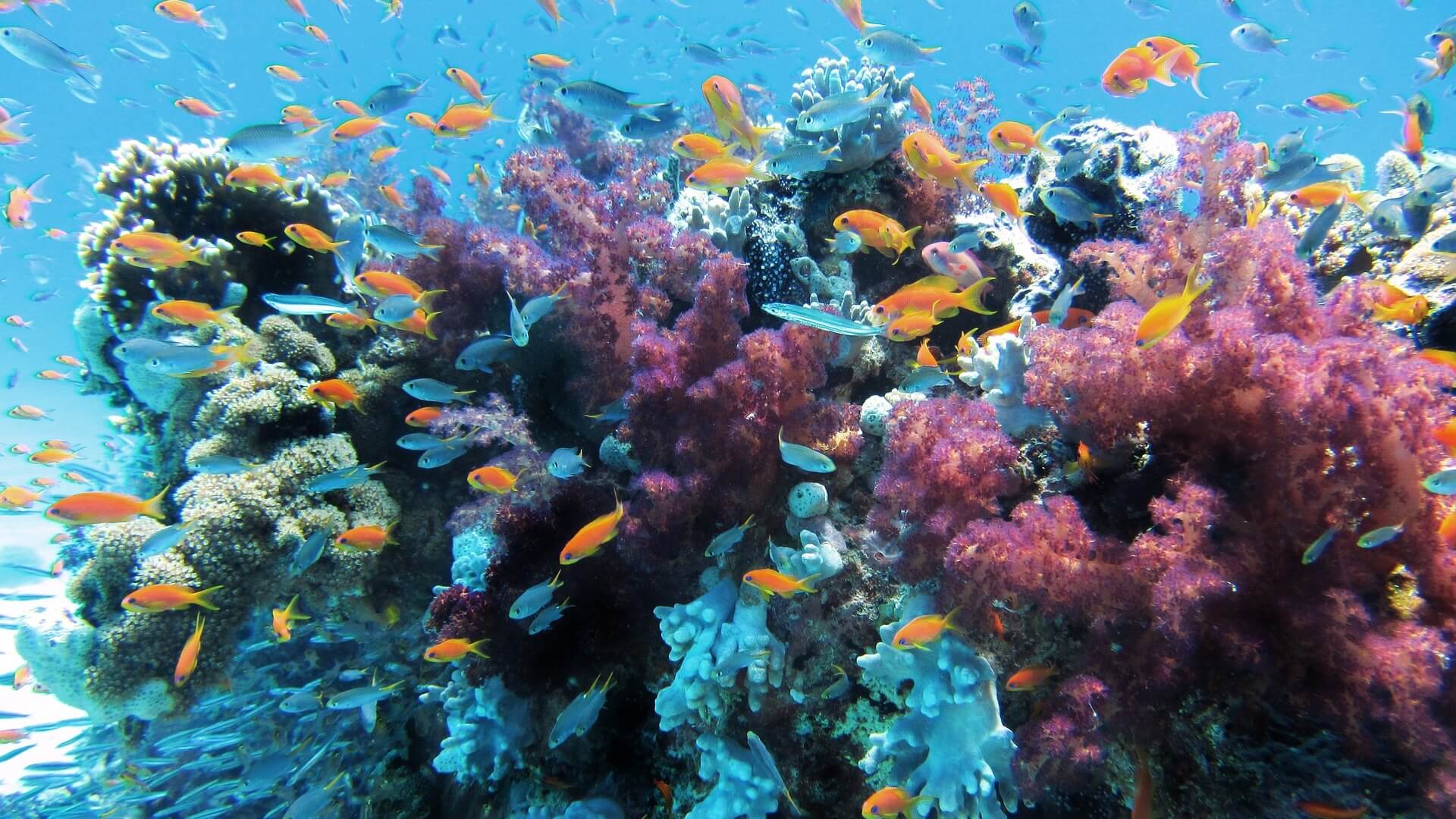
Do get in touch with us at Rum Point Club for further snorkeling tips, fun facts about our sealife, or help with planning your itinerary. We would also love to hear about your own favorite snorkel spots!





